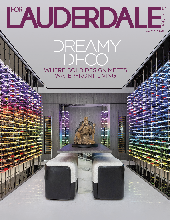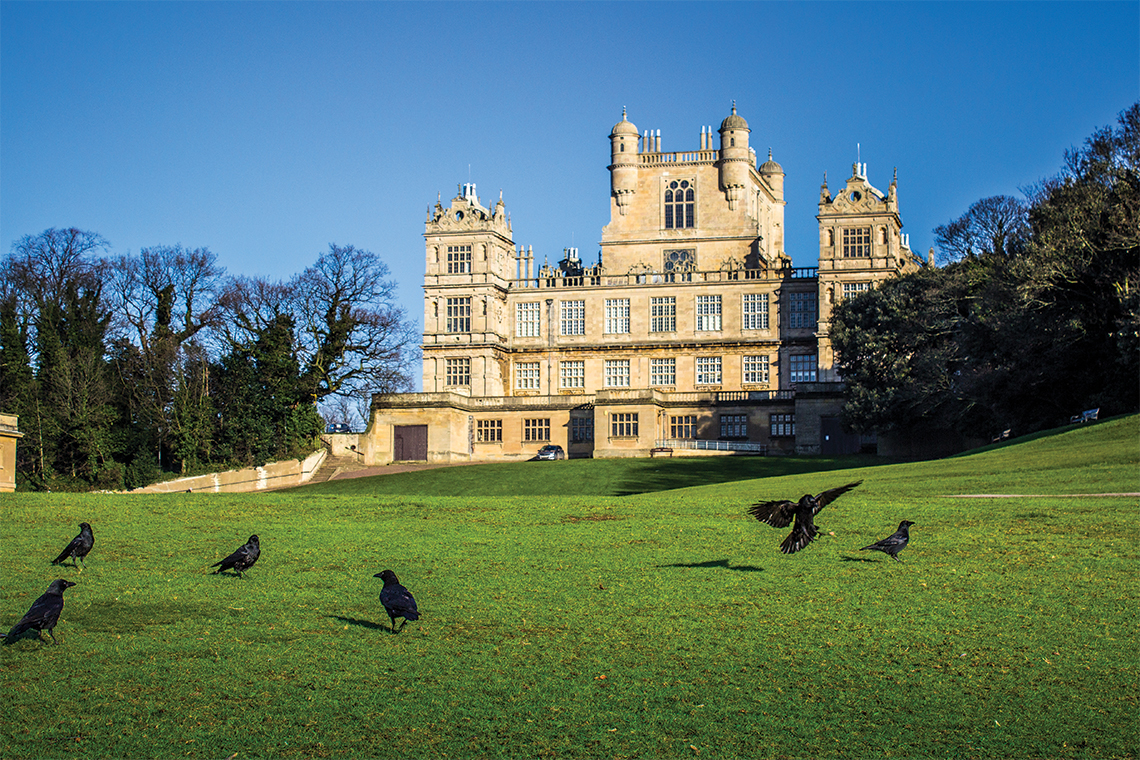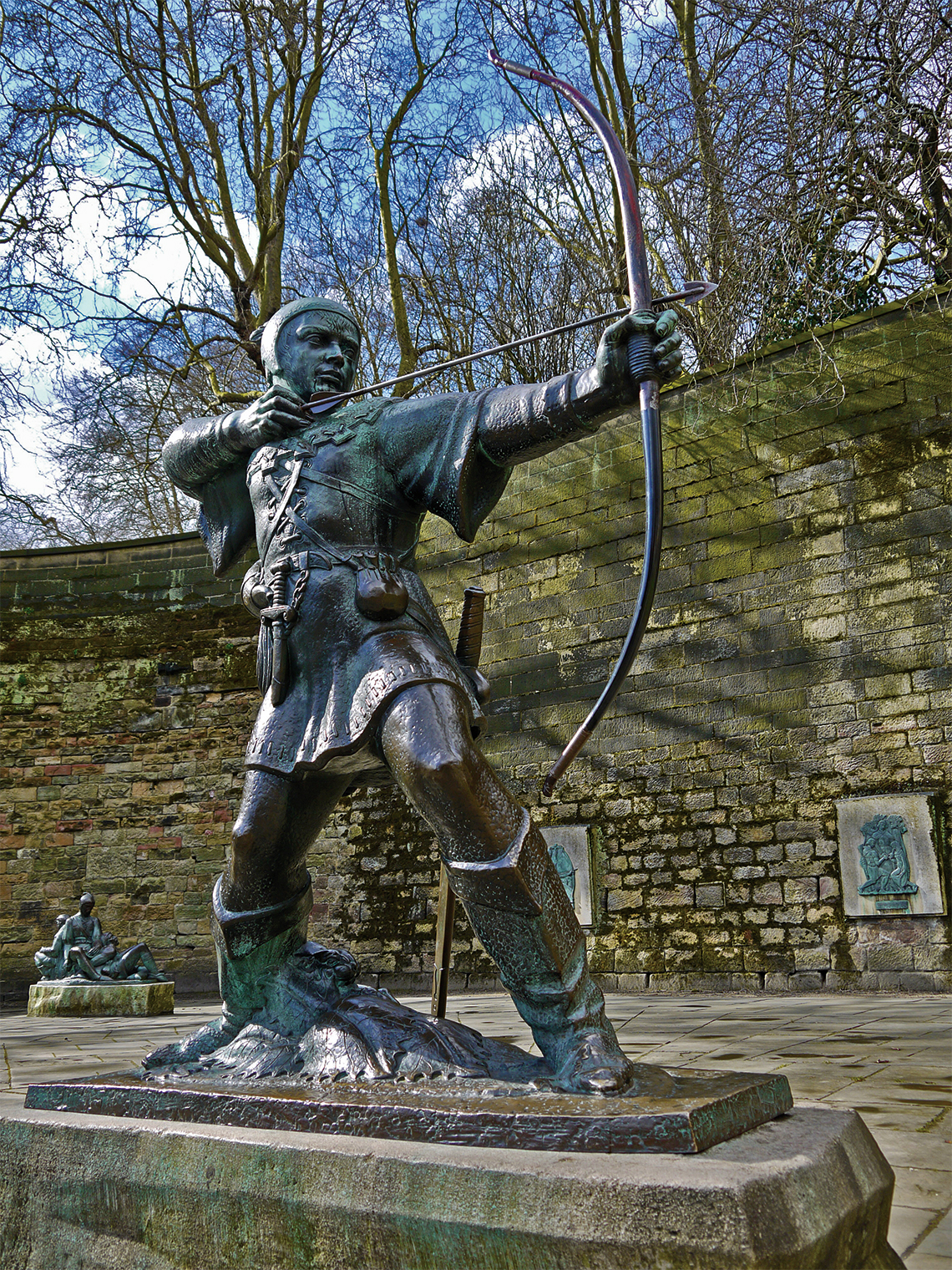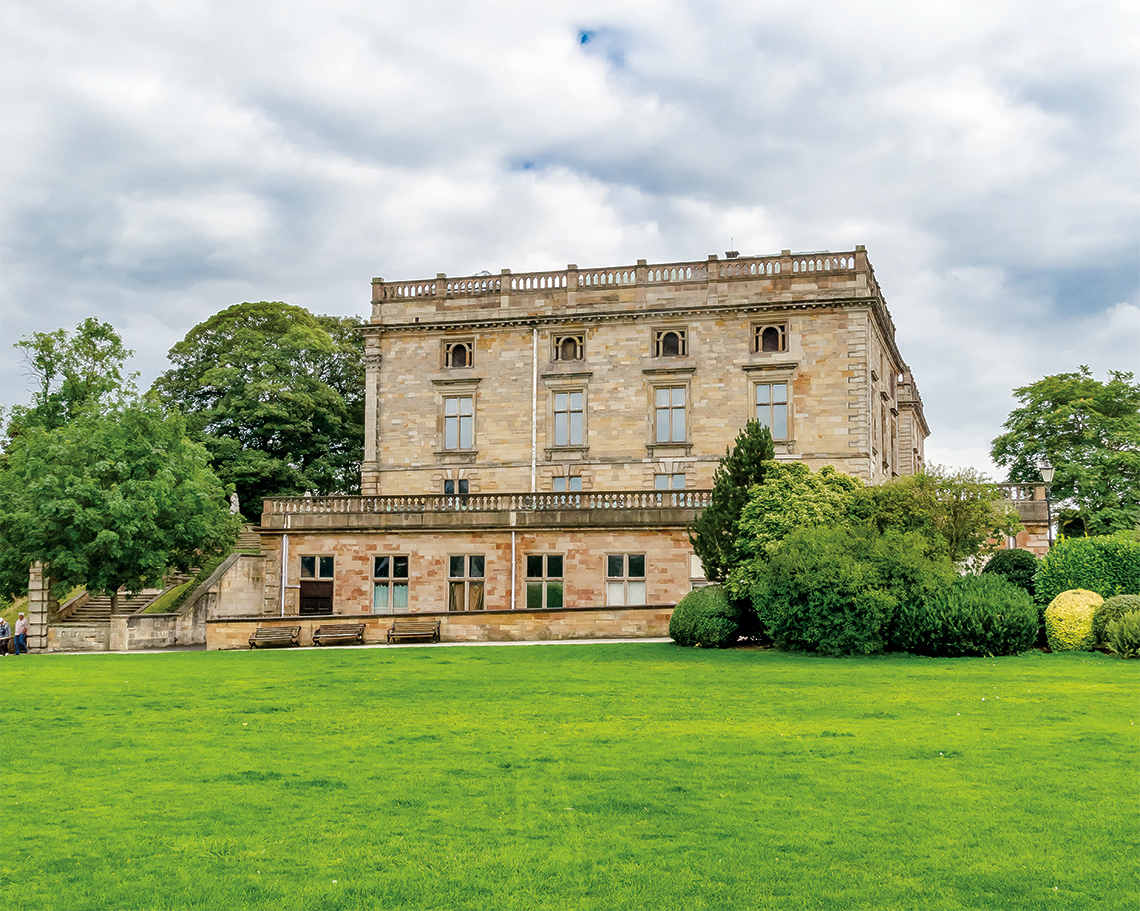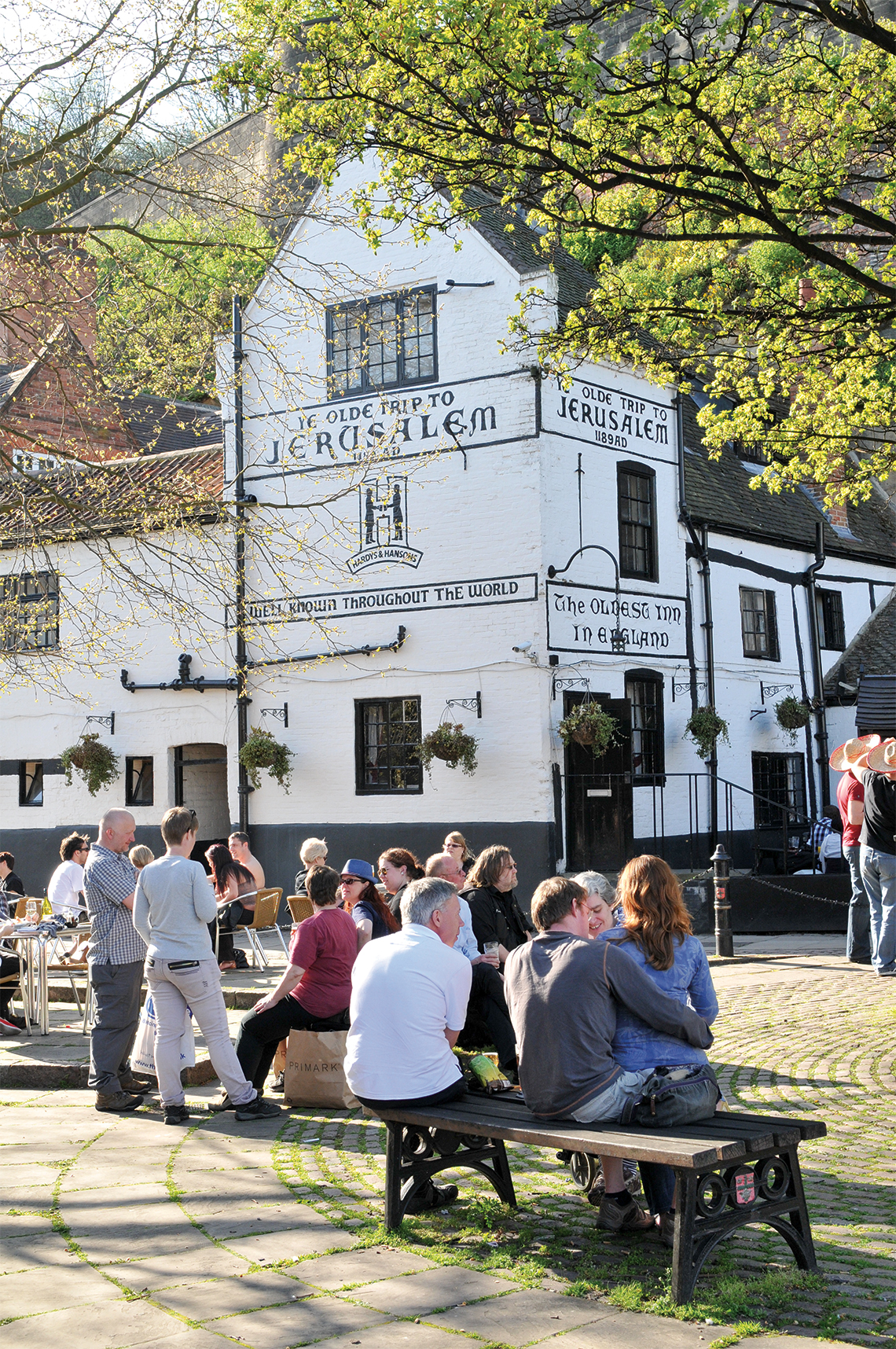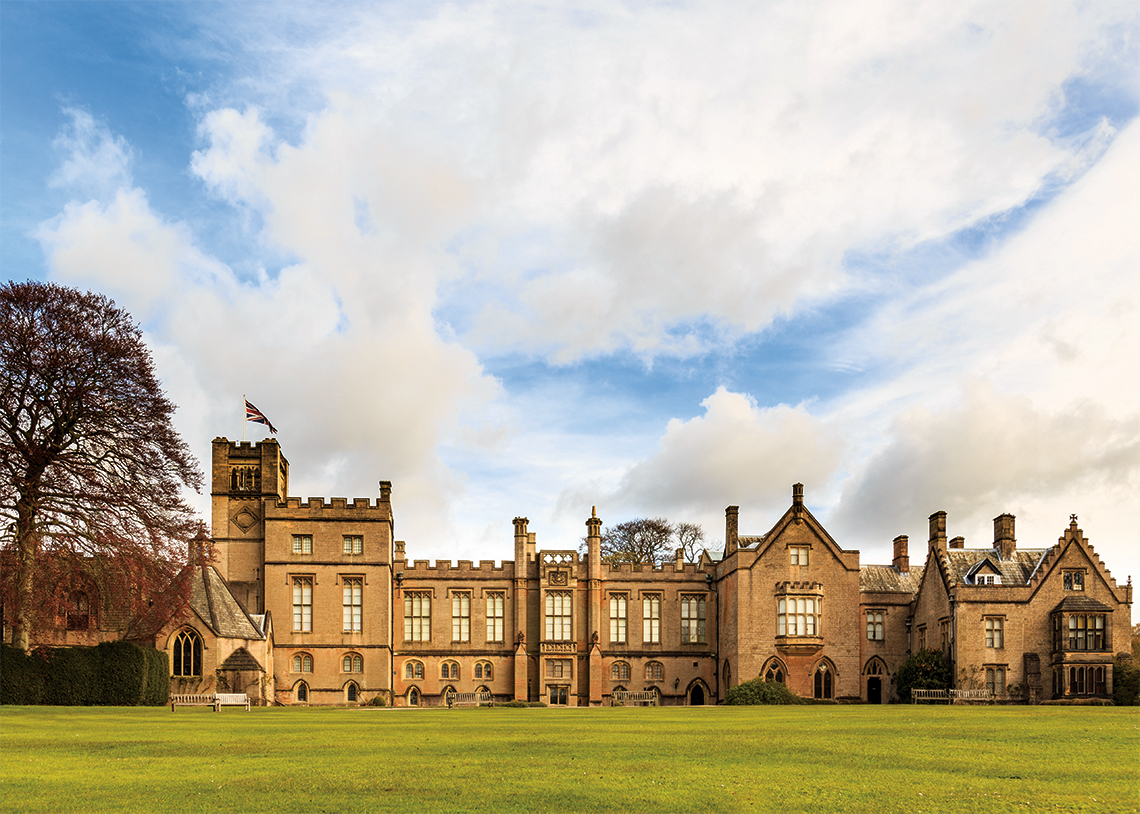From its perch on Castle Rock in the southwest corner of Nottingham city center, Nottingham Castle is hard to miss. It is many things – a landmark, an orienting device if you get turned around in the city center, an art gallery and museum.
What it’s not, really, is a castle.
Oh sure, it used to be a castle. The earliest castle was built by William the Conqueror in 1067, and for the next 600 years or so various English monarchs added bits until it was a formidable structure smack in the center of England. So formidable in fact, that during the English Civil War, Charles I holed up there to build his army. Charles lost the war and his head, and when it was all over England’s new leaders decided to destroy the castle to prevent it from being used for war naughtiness ever again.
This left the property in a state that ye olde Zillow would likely have described as “full of potential,” and a few years later an English nobleman built the mansion – impressive, blocky, definitely not a castle – that remains there today.
So there’s no castle, but there is a good tale about why there’s no castle. In Nottingham, good tales are something you’ll encounter frequently.
The most famous tale, as well as the city’s international brand recognition, comes of course from that famous folk-tale resident, Robin Hood. And while there’s more to the city than just its most famous mythic hero, Robin’s a good ambassador for the city. Nottingham’s history is that of rebellion and rebelliousness, of people caught in the middle who decide to go their own way. The River Trent, which acts as England’s Mason-Dixon Line, runs through Nottingham. If you’ve ever called anybody a Luddite, you’ve used an insult with Nottingham roots. The place’s literary heroes tend towards the iconoclastic – take Lord Byron, DH Lawrence or Alan Sillitoe, the latter a 20th-century realist author sadly not as widely read in this country as he ought to be.
The modern city’s an urbane place with two universities, great restaurants and some of Britain’s best shopping. It’s a compact city with excellent public transportation – a place where you can see and do a lot without having to bother with a car. It’s a city of arts and culture, with one of the UK’s best arts and theater scenes.
And like any good city of rebellion and revolution, it’s got plenty of places to drink a pint. Start a Nottingham tour with a fortifying ale at Ye Olde Trip to Jerusalem, the pub built into the base of Castle Rock. A few pubs around the country lay claim to being England’s oldest; Nottingham folk make their case for the Trip (est. 1189). Much of the pub extends into Castle Rock in caves – an atmospheric way to drink in the same spot where King Richard the Lionheart supped before setting off on the Crusades (hence the pub’s name).
Another Castle Rock that offers a good pint is Castle Rock Brewery, the city’s largest brewery. The brewery and adjacent Vat and Fiddle pub are located near the train station, and brewery tours offer an interesting detail – they’re given, in full costume, by Tim Pollard, one of the city’s top “Robin Hoods.” (Local legend Tim also gives tours at Nottingham Castle.)
But if you really want to meet Robin Hood, you might be tempted to head north out of the city into his fabled Nottinghamshire home. So let’s have a word about Sherwood Forest.
Fans of rundown 1970s tourism relics will love the Sherwood Forest Visitors Center and surrounding park; everybody else can give it a pass. (Plans are afoot to rebuild the entire place, so check back in a few years.) Much more interesting in the Sherwood Forest area is a stretch called the Dukeries, named for its four ducal estates in close proximity. Places such as Clumber Park (Clumber House is no more, but the expansive park and gardens are worth the trip) and Thoresby Hall (an intact hall surrounded by lush grounds that today is a private hotel with spa and elegant restaurant) are better uses of your Sherwood Forest time than cod-Robin Hood nonsense better suited to Myrtle Beach.
Closer in towards Nottingham sits Newstead Abbey, Lord Byron’s ancestral home. It offers one of the area’s best gardens – a place that, among other sights, features a massive memorial to Boatswain, Byron’s beloved Newfoundland dog.
For a country hike to Newstead, ride the Nottingham tram to its northern terminus at Hucknall. From there it’s possible to walk into the Nottinghamshire countryside, perhaps take in the picturesque villages of Linby and Papplewick, and eventually arrive at Newstead Abbey. (Walking guides detailing specific routes should be available at the city’s tourism center.)
For Nottingham’s other great stately home, you don’t even need to leave the city. Wollaton Hall, a gothic and somewhat over-the-top Elizabethan manor home, got some modern fame when it was used as Wayne Manor in the 2011 Batman reboot The Dark Knight Rises. Today the main house has become the city’s natural history museum, while part of the stables has been turned into the fantastic Nottingham Industrial Museum, which has more Victorian steam engines, impressive old tractors and other rumbling treasures than even the most committed internal combustion geek could hope for. (The museum’s typically only open on weekends and holidays. If you happen to be there on the last Sunday of the month, you’re in real luck – that’s when they take out the collection and fire it all up.)
The house stands on a hill overlooking massive grounds that – uniquely for a place surrounded entirely by suburb – includes a herd of deer. (The aristocratic Willoughby family, who owned the hall from its 1580 construction to its 1925 purchase by the city, could hunt deer on the grounds if they pleased – but you should probably refrain.) It’s easy to spend a day hiking around the grounds and the rolling next-door campus of the University of Nottingham.
So at this point you’ve had a couple pints and done quite a bit of walking. Time for some culture (and dinner)?
The name and imposing Victorian buildings of the city center’s Lace Market area offer a clue as to the city’s former prominence in the lace industry. In fact, those original Luddites were lace workers based largely around Nottingham who in the 1800s took to smashing the Industrial Revolution-era power looms and other new technology that threatened their jobs. (Their hero, Ned Ludd, was a folk hero who, like Robin Hood, was purported to live in Sherwood Forest.) But it’s nearby Hockley that’s the city’s thriving, café-laden Bohemian quarter. Stop in at Lee Rosy’s for a tea or Hartley’s for coffee and cake before heading over to Kayal for the cuisine of India’s Kerala state. Or try the Broadway Cinema and café-bar, where years ago a little-known filmmaker named Quentin Tarantino turned up at a film festival to show something called Reservoir Dogs. (He liked it so much he came back several years later, which is how Nottingham got the UK premiere of Pulp Fiction.)
Across the city center, the modern Nottingham Playhouse is regarded as one of the most important producing theaters outside London while the Theatre Royal – built in 1865 and as ornate and lovely as any 19th-century London theater – brings in a diverse program of quality touring productions. Since opening in 2009, Nottingham Contemporary has drawn rave reviews as one of the country’s best contemporary art centers, while the New Art Exchange offers interesting, challenging works while focusing on black and Asian artists. In addition to public art spaces, the city offers many private studios and galleries – a trend that’s helped by the artists who remain in the city after graduating from Nottingham Trent University’s highly rated arts programs.
Nottingham history hasn’t always been easy, what with those doomed kings, controversial writers and loom-smashers. However, it’s helped create a city with a fierce independent streak that’s visible not just in walks around its history, but in evenings out amid its present.
Details
Getting there: Nottingham is less than two hours on the train from London’s St. Pancras International Station, which also connects to continental Europe via the Eurostar train. East Midlands Airport, located outside the city, offers mostly budget airline flights from continental Europe.
Getting around: Nottingham city center is compact and walkable, and the city’s tram and bus system is excellent. A pay-as-you-go Robin Hood Card works similar to a New York City MetroCard.
Where to stay: The upmarket Lace Market Hotel offers a luxurious stay in the city center, while more budget-conscious Premier Inn is well located just north of the city center on the Nottingham Trent University campus and next to a tram stop.
